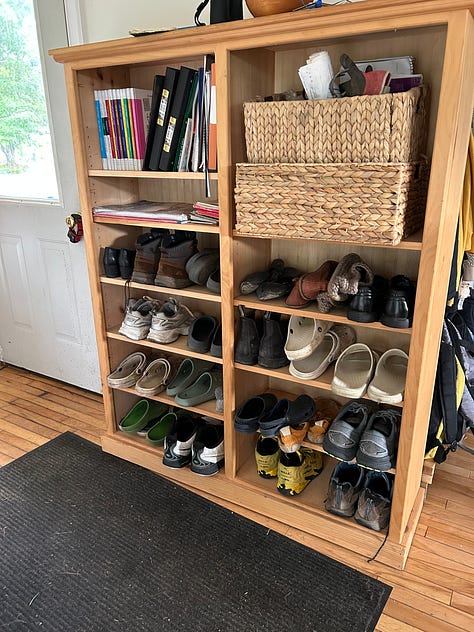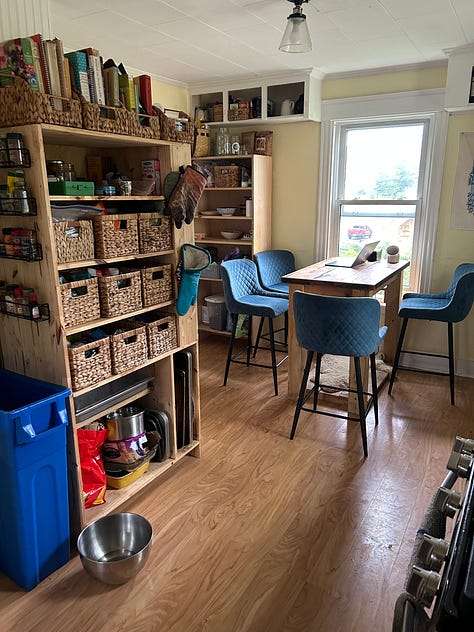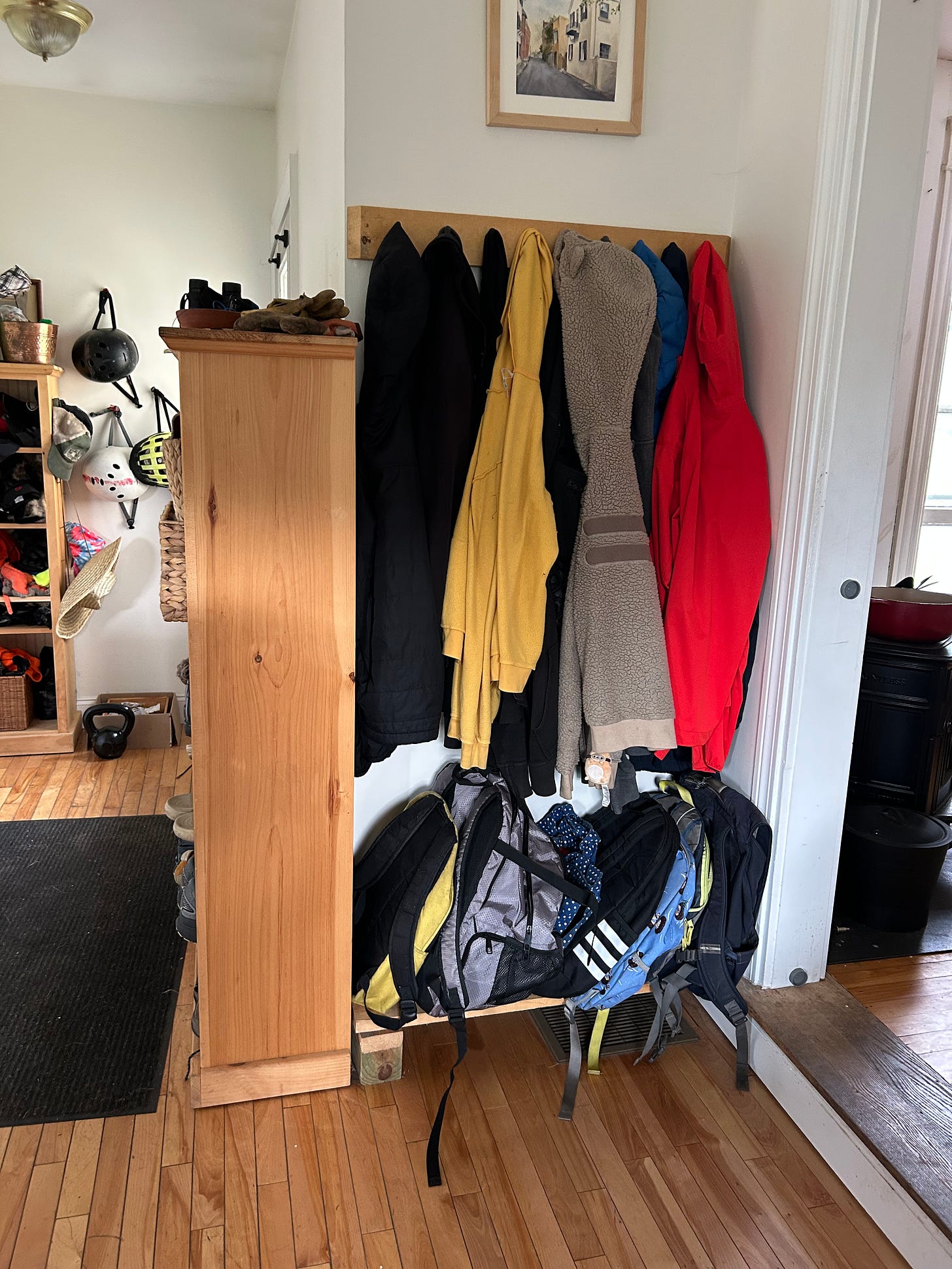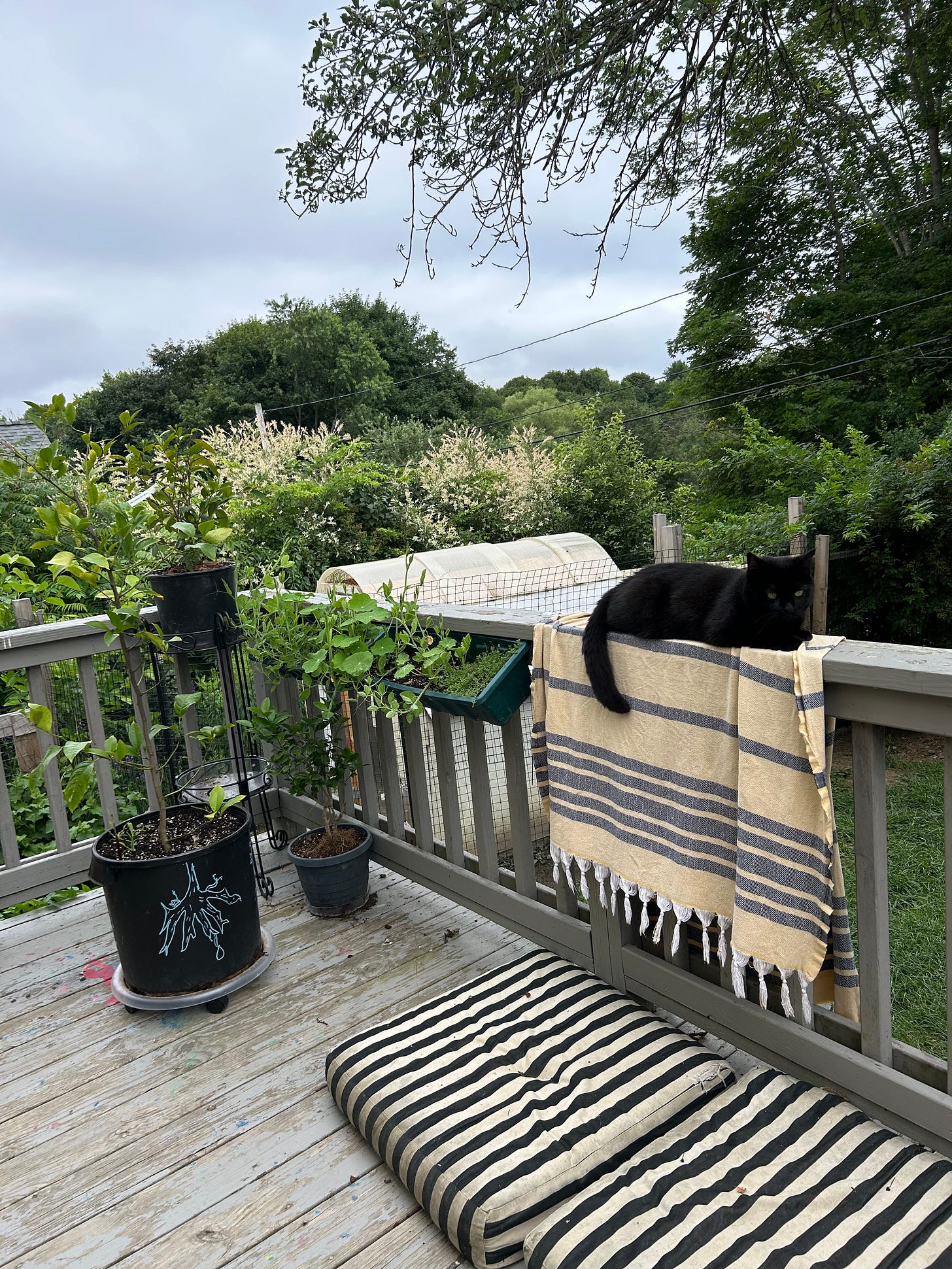For many people, this would not count as “tidy”:
Nor this:
Or even:
I have been in houses, with people living in them, that look like design magazines. I look around and think: where is everything? Don’t they have any food? Maybe they eat out all the time? Where are their clothes? What do they do when they want a blanket?
Such people (I have learned) employ modern contrivances such as “closets” and “cabinets” in which to hide away all of their objects. And if someone places an object on a chair or a piece of furniture, it is quickly whisked away into these hiding spots.
A friend of mine is this type of person. She has told me that visual clutter of any sort simply makes her unhappy and anxious, so she deals with it immediately, in order to stay calm. Her house always looks clean and lovely.
My house (on the other hand) does not typify this sort of things-hidden-away order. Here is a picture of what I am looking at right at this very moment:
We have no kitchen cabinets. They don’t work for me, as (in our house) they tend to degenerate into holding tanks of chaos. So I like things where I can see them - that way I know when its time to sort things out.
What you see in all of the above photos is our version of tidiness. Surfaces are clean (minus a certain level of dog hair on the sofa cushions) and free of superfluous items. The work gloves on top of the bookshelf and the kettle bell are in their proper “at-hand” places. The jackets and backpacks are off the floor, off the sofa, and that - in our house - is success.
I learned the phrase, “What does success look like?” from my husband, who has a job that puts him into meetings where office folk tend to use language such as this. At first, it might sound pat and stupid, but it is actually an extremely useful question to ask (for all sorts of endeavors) because success means different things to different people.
If I were using the tidiness standards of my friend (whose house looks like a design magazine), I - with husband, two boy-children, two cats, two dogs and eight chickens - would be setting myself up for failure. And, her standards would not be necessary to keep me happy, as I (and my family) are perfectly happy to see things on hooks and shelves, as long as they are in their proper places and not scattered all around.
Here is an example of disorder, in someone else’s kitchen:
This is a friend who, like me:
isn’t especially disturbed by clutter
but feels much better when things are tidy
This is a typical state of this table, which is ostensibly also a place to enjoy a glass of wine or a cup of tea. For her definition of “success”, she does not need to hide every single thing away in closets and cabinets, but she does need to create dedicated spaces - homes - for categories of objects. She is clearly in need of a custom-designed junk drawer (which I am working on at the moment.)
These photos, in our house, were taken on a typical afternoon:



I look at these and think “Success!!!” and “clean!”. Even with a pair of shoes and socks loitering on the floor, all of these spaces are within our acceptable parameters of orderliness. For my uber-tidy friend, this would not be “success”, as the - shall we say - “enriched visual environment” would probably make her nervous.
When you are setting housekeeping goals for yourself, it is important to determine “What does success look like?” ahead of time. Then you will know when you get there.








